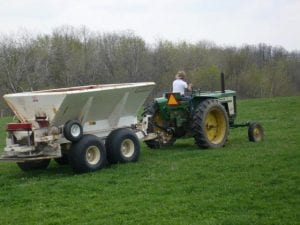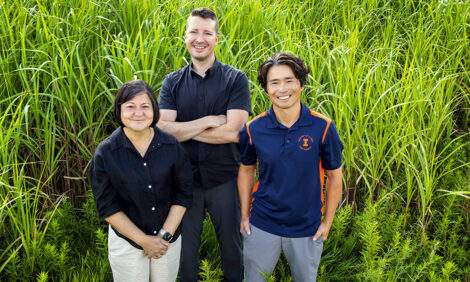



Plan now for fall pasture fertilization
Early fall is one of the best times to top-dress maintenance fertilizer on perennial forages, writes Marc Sulc and Greg LaBarge, both with The Ohio State University.
 Soils are usually firm in September, and autumn topdressing provides needed nutrients for good winter survival of the forage stand and vigorous regrowth the following spring. Now is a great time to begin preparations and acquiring fertilizer supplies so timely fall applications can be made.
Soils are usually firm in September, and autumn topdressing provides needed nutrients for good winter survival of the forage stand and vigorous regrowth the following spring. Now is a great time to begin preparations and acquiring fertilizer supplies so timely fall applications can be made.
Remember that hay crops will remove about 50 lbs. of K2O and 12 lbs. of P2O5 per ton of dry hay harvested. Adequate amounts of soil P and K are important for the productivity and persistence of forage stands. But nutrient over-application harms the environment and can harm animals fed those forages. A recent soil test should always guide what nutrients to apply and how much. If a recent soil test has not been made, now is a great time to do it. If nutrient deficiencies are suspected, then tissue tests combined with the soil test values can be helpful in the diagnosis of nutrient issues.
When recommendations call for high rates of phosphorus and potassium, there is an advantage to splitting the application, with half applied this autumn and the remainder applied next year after the first cutting when soils are firm.
Ohio State University Extension has an Excel tool to help you determine the right rates to apply based on your soil test report. The OSU Fertility Recommendation Calculator and a user guide are available at https://forages.osu.edu/forage-management/soil-fertility-forages. We highly recommend using this tool to check any fertilizer recommendations you receive, as we have seen some fertilizer recommendations that are too high.
It is crucial not to over apply P and K. For example, many dairies have high levels of soil P, making the expense of fertilizer P unnecessary. When soil test P exceeds the agronomic level of 50 ppm, there is increased potential of P losses into streams and lakes. Applying too much K will result in luxury consumption by the forage plants, leading to excessive levels of K in the forage that can cause animal health problems. Judicious amounts of fertilizer are good for the wallet and our environment.


